
“Craftsmanship to me is an accumulation of passion and trial and error. There is a strong element
of attention to detail and traditional techniques, but also modern design sensibilities.”
Sophie Sellu, designer-maker and founder at Grain & Knot.
After taking a spoon-carving course on a weekend in 2013, founder of Grain & Knot Sophie Sellu found herself instantly enchanted by the traditional craft and it serendipitously set her along the path she’s on today.
“I didn’t realise then how much it would shape my future, but I really enjoyed the process,” Sophie reflects.
She lives and works in South East London, but can often be found in the woodlands in rural Kent in the UK. Nature and reclaimed wood in particular are huge inspirations for her lovingly hand-carved pieces, which she crafts in her studio after a process of sketching and templating.
We took the time to speak to Sophie about her creative techniques and sustainable practice, and she tells us more about the inspiration behind working with reclaimed and spalting wood…
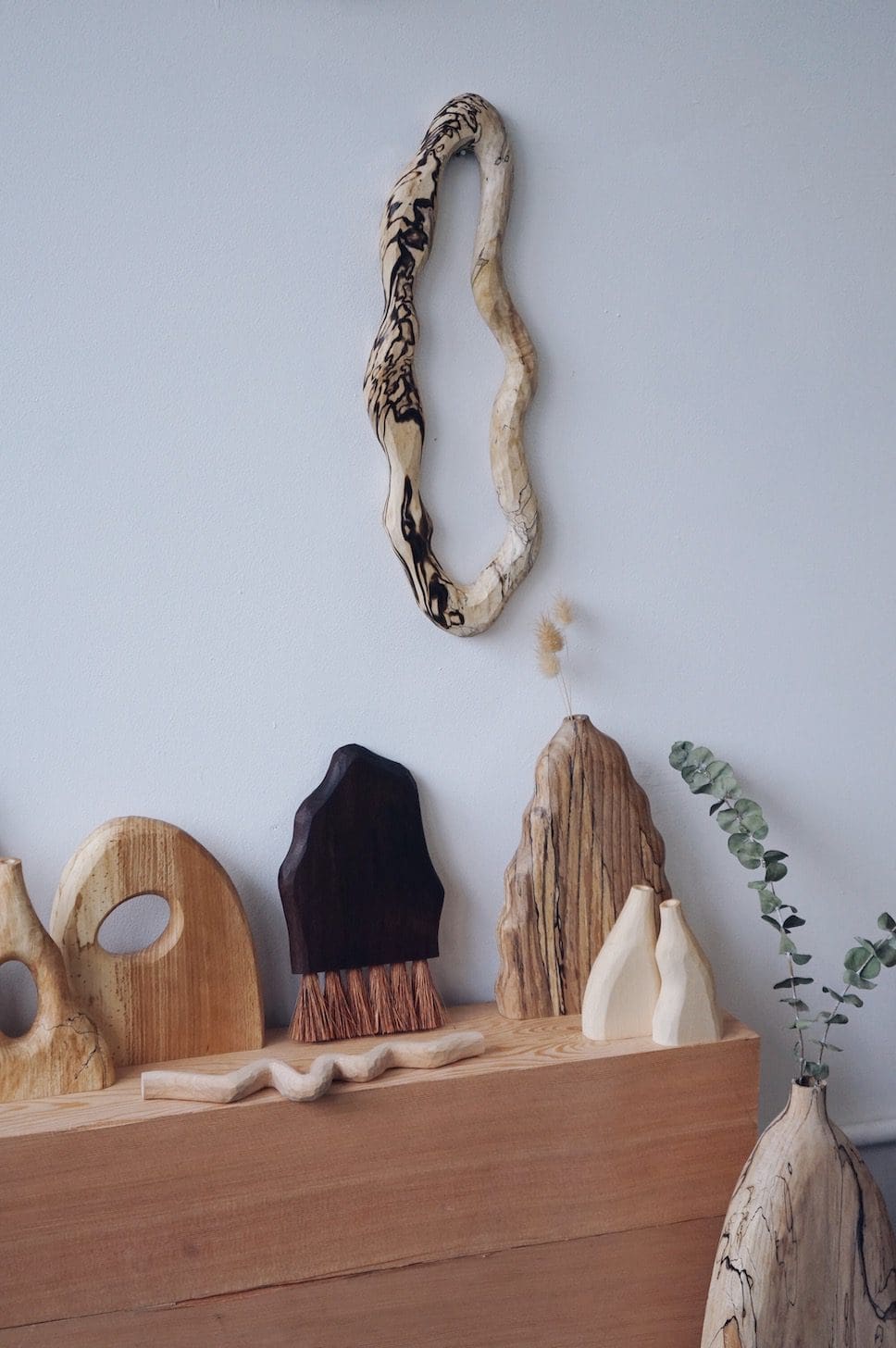
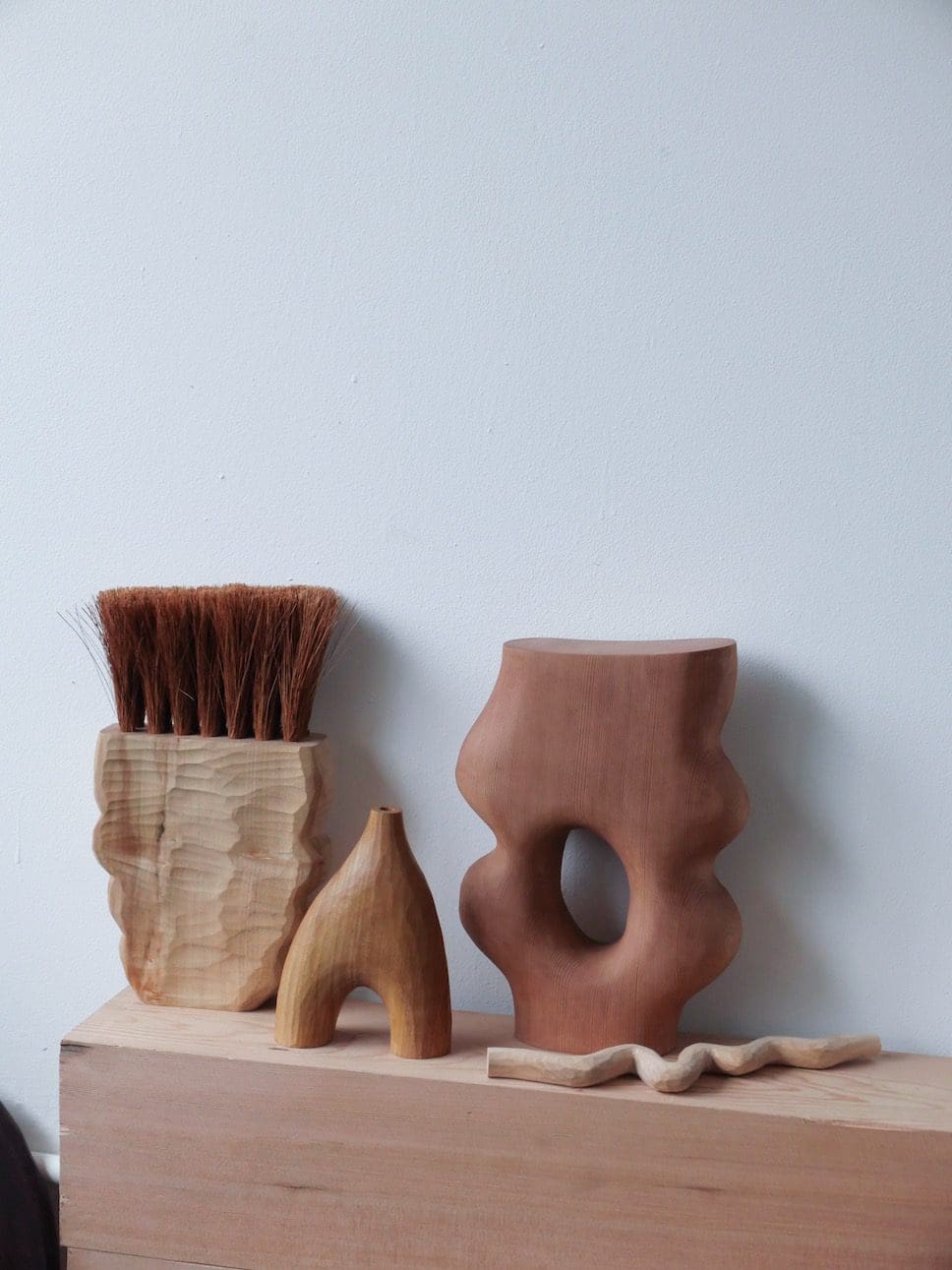
How did you learn your craft?
When I was at school, I took woodwork class and absolutely loved it. I have never been the most academic so working with my hands was a way to really grab my attention. I am a visual learner and therefore seeing something come to life and imitating the techniques shown to me worked really well.
As an adult, I was mostly self taught after I took a short day carving course. I really enjoyed the trial and error aspect of this work and learning from my mistakes. I was carving for a couple of years before deciding on turning my craft into a business.
What initially drew you to working with wood and what continues to inspire you to work with this material?
I think it’s always been a nostalgic material for me, as I have worked with wood for so long. It’s a material I’m really familiar with, but there is still so much I have to learn. There are so many variations of species and I really find it fascinating.
I often use spalted timbers (wood with colouration caused by fungi) in my work and find the process of decay and spalting storm fallen timber really exciting. The tiniest of environmental factors can change the outcome of the patterns in the grain, and the patterns are so varied and beautiful.
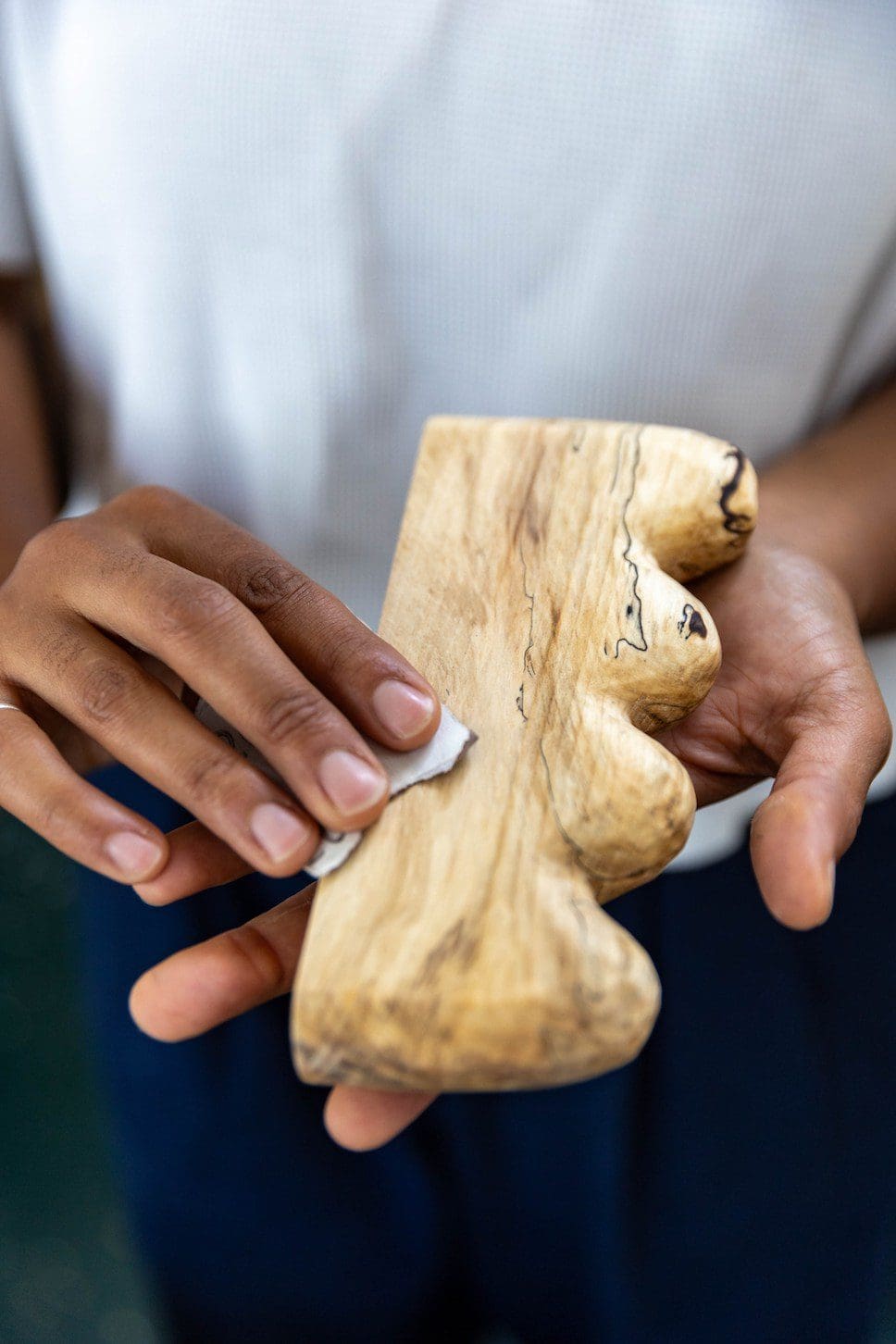
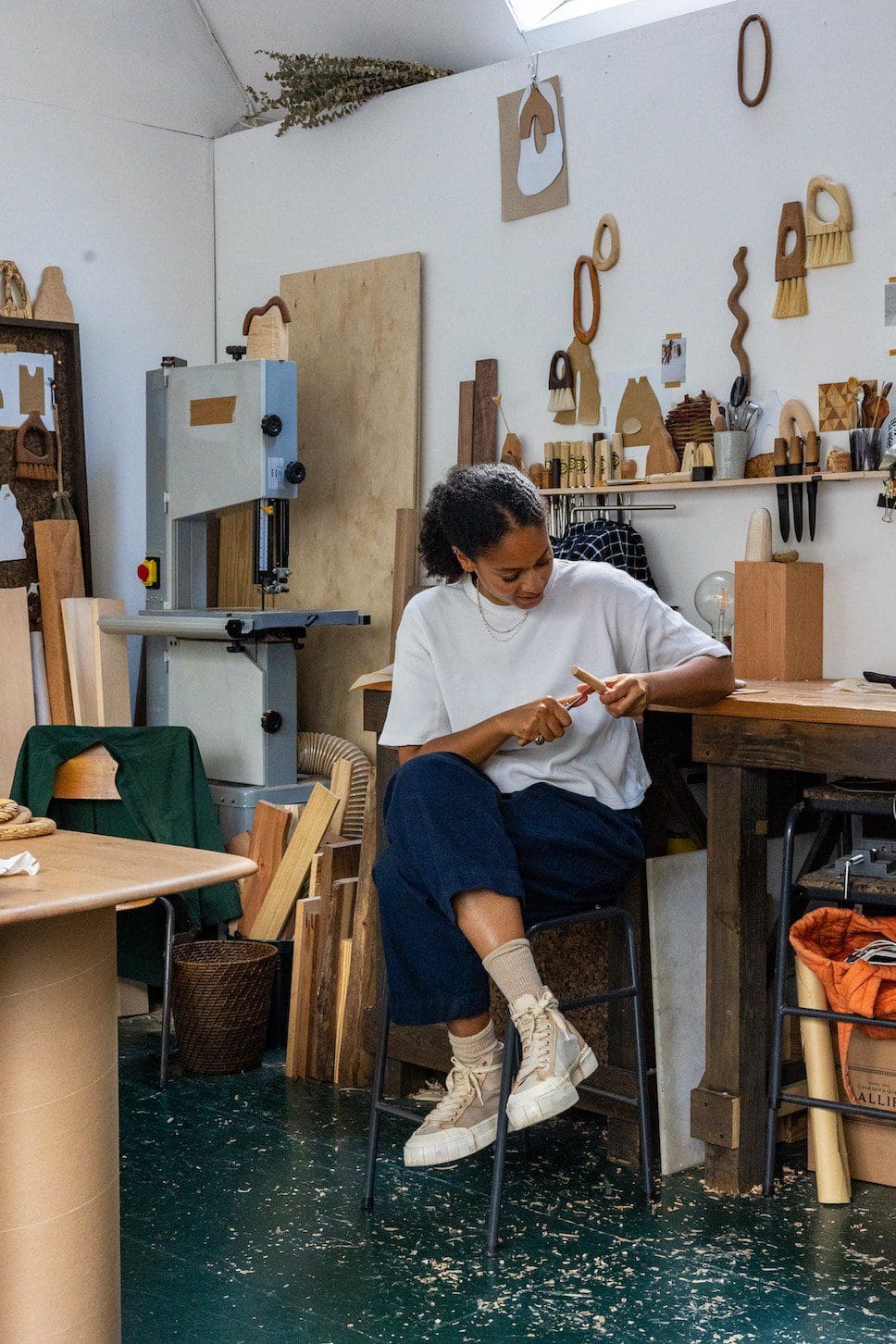
Can you tell us more about why you choose to work with reclaimed, sustainably sourced or storm-fallen timber and how this fits into the process of making each piece?
When I started carving I didn’t have access to green wood, so made do with anything I could find. Broken furniture, found materials. I loved that I was turning something with no value into something that could be beautiful and useful.
As I developed my practice, it made sense to only work with reclaimed materials as I considered the impact the items had. I wanted to make heirloom pieces made from materials deemed as waste, giving them a new life.
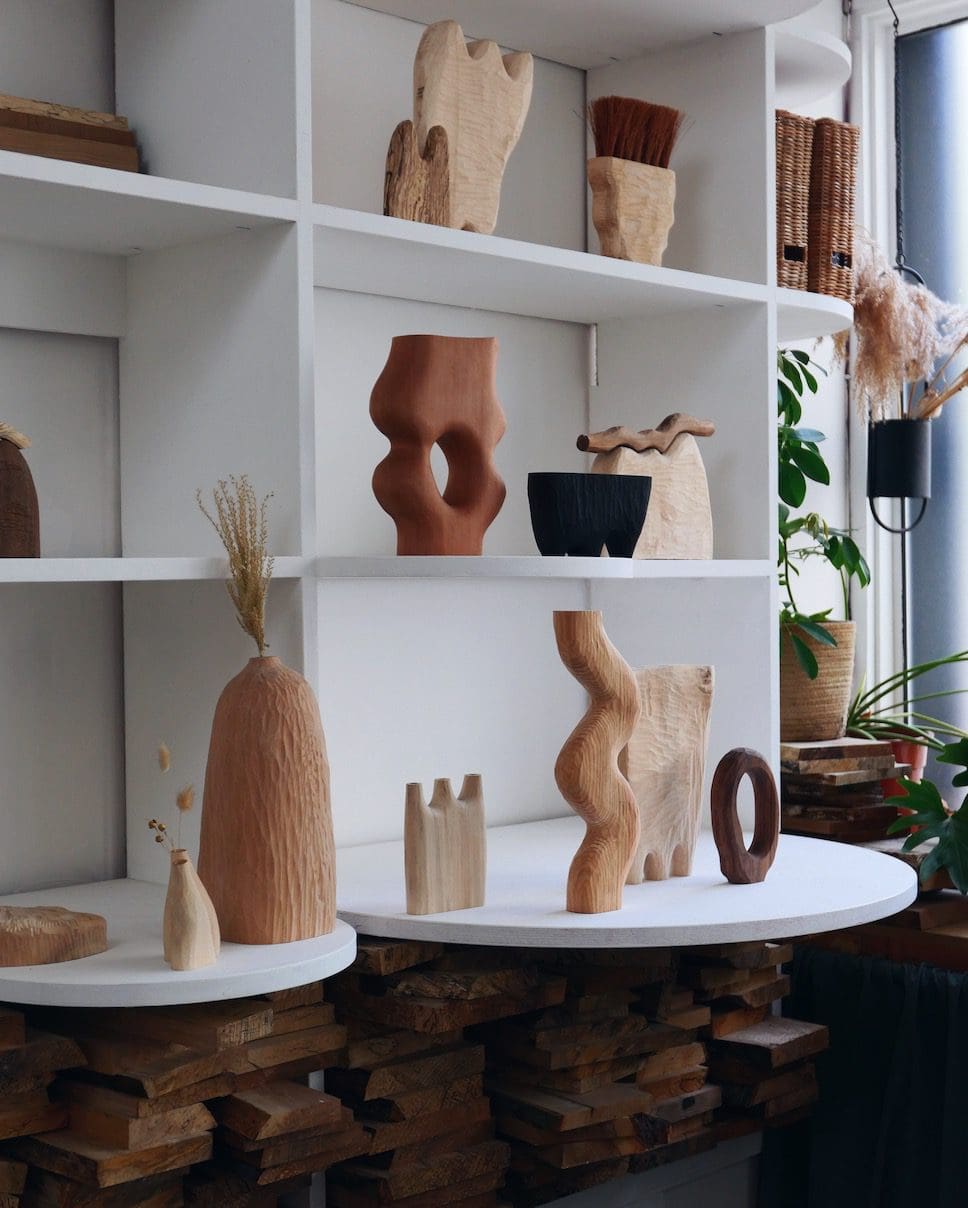
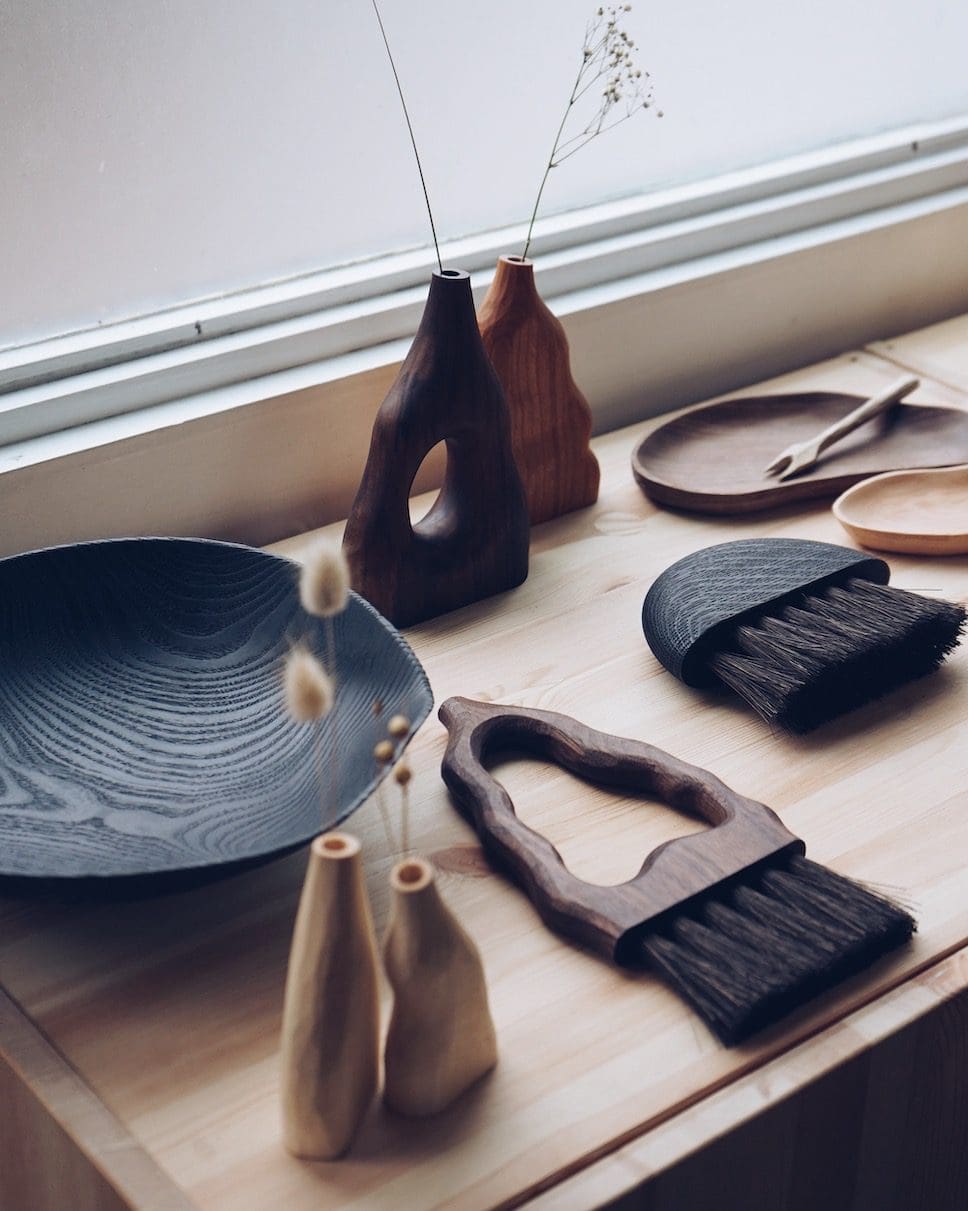
Can you tell us about the process from coming up with an initial design through to production?
My process always begins with sketches, often rather crude and free form working out shapes. Once I am happy with a form I will transfer it to a card template to make sure I have the correct scale, I don’t want any wood to go to waste so this is a really quick way of making sure I am on track. I will then use the templates to mark up the wood, cut it out and begin carving until I have the desired shape and texture, refining as I go.
I usually only make one or two pieces in each design, but make variations as I go depending on what timber I have available, working around the cracks and knots in an efficient way, and celebrating the beauty of the patterns in the wood.
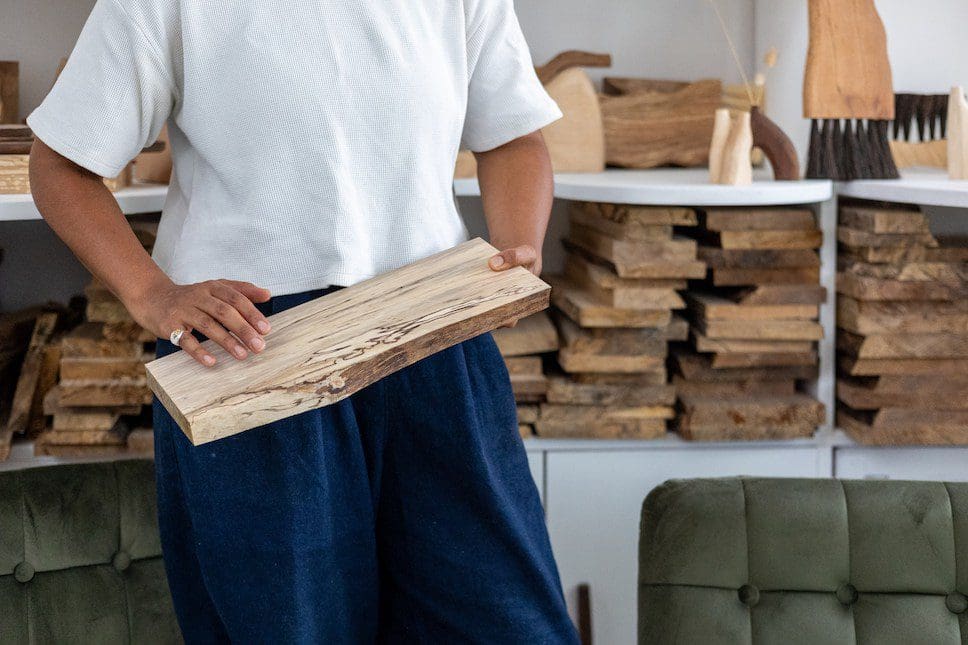
How have you developed your style, approach and aesthetic over time?
When I first started carving, I was very much into making purely functional pieces, but I have become more interested in bridging the gap of functional and sculptural. I love to make pieces that are useful but can also be displayed rather than hidden away. I’ve always set out to make pieces that are a pleasure to use.
My style has always been organic, textured, and almost naïve in its approach. Thick textured facets and playful forms that bring a boldness to the objects they encompass. I am always adapting and learning different skills and techniques to better my process, I just hope to continue to make objects that I enjoy.
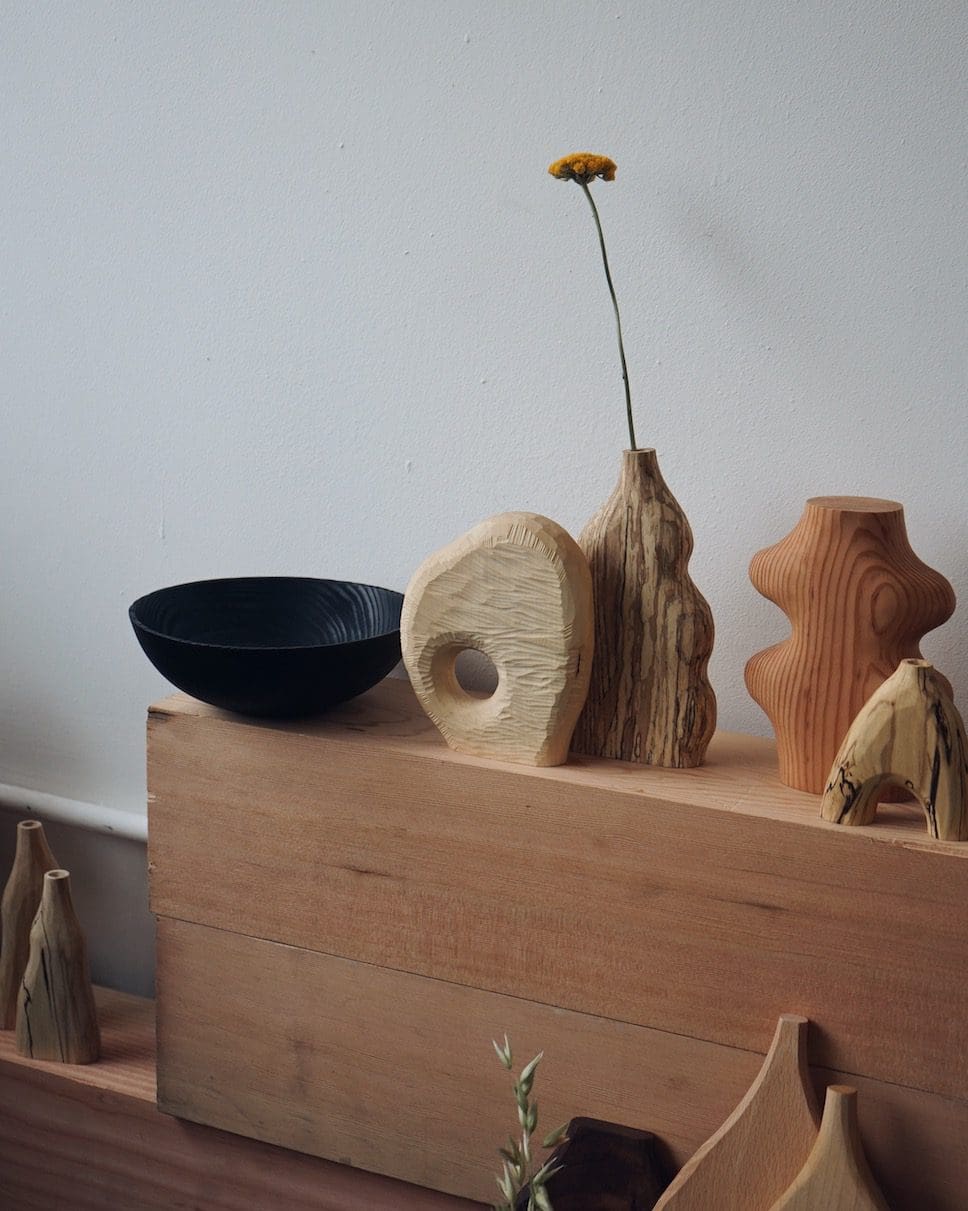
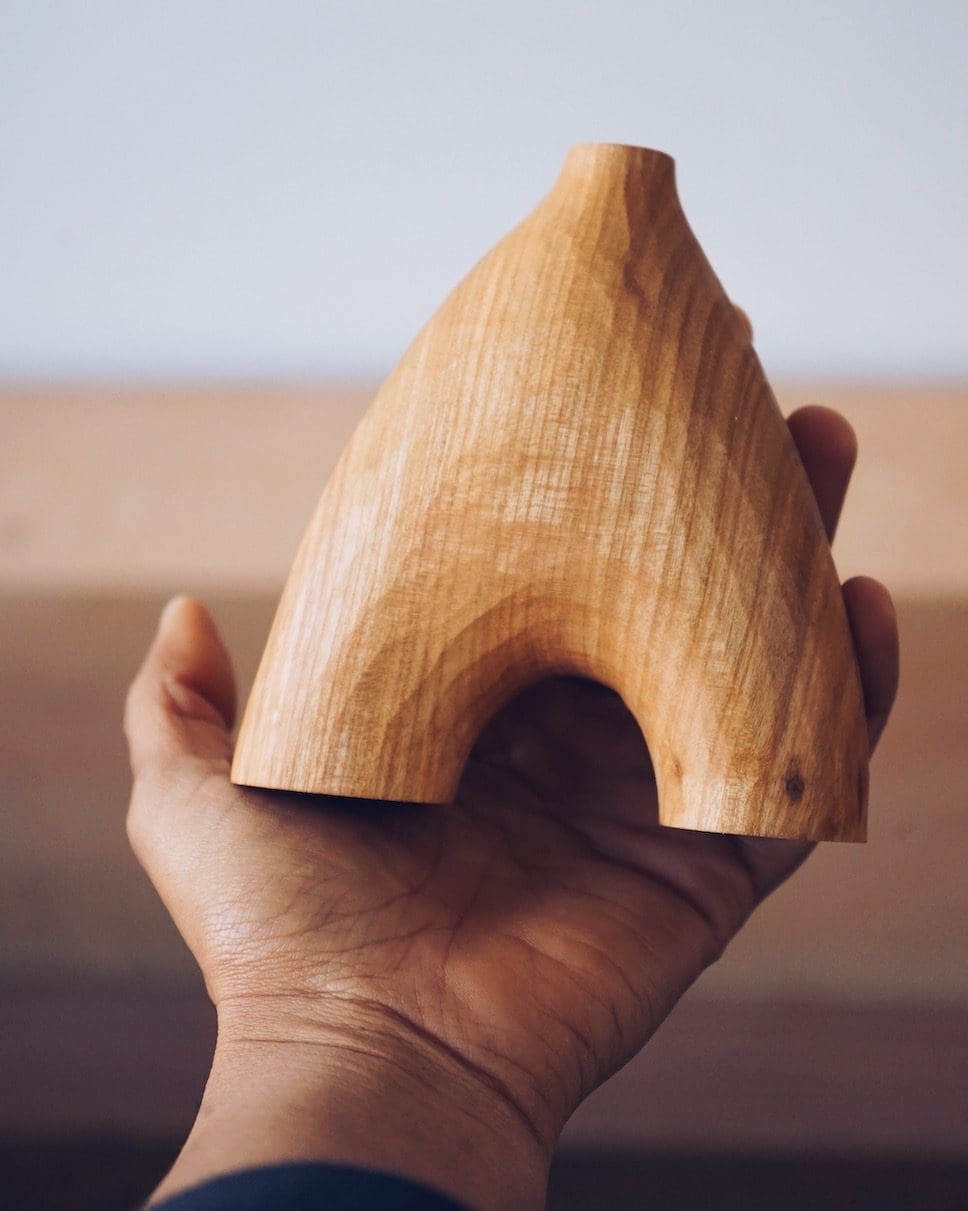
What does a typical day in the studio look like for you?
Every day is different in my studio but I intend to spend at least three or four days a week making. I get sidetracked by the usual admin but also get lost in the woods, processing timber and spending time in nature.
As I sell my work in seasonal collections, it is much easier to get stuck into the creative process in terms of weeks rather than days. If I have a collection coming up it gives me a lot of focus on specific areas. One week I can be just drawing up objects and sketching, one week processing, another carving, and another finishing items before the long process of getting all the unique items photographed and put online. I get quite distracted and having lots of different pieces I can work on at once helps to keep me focused.

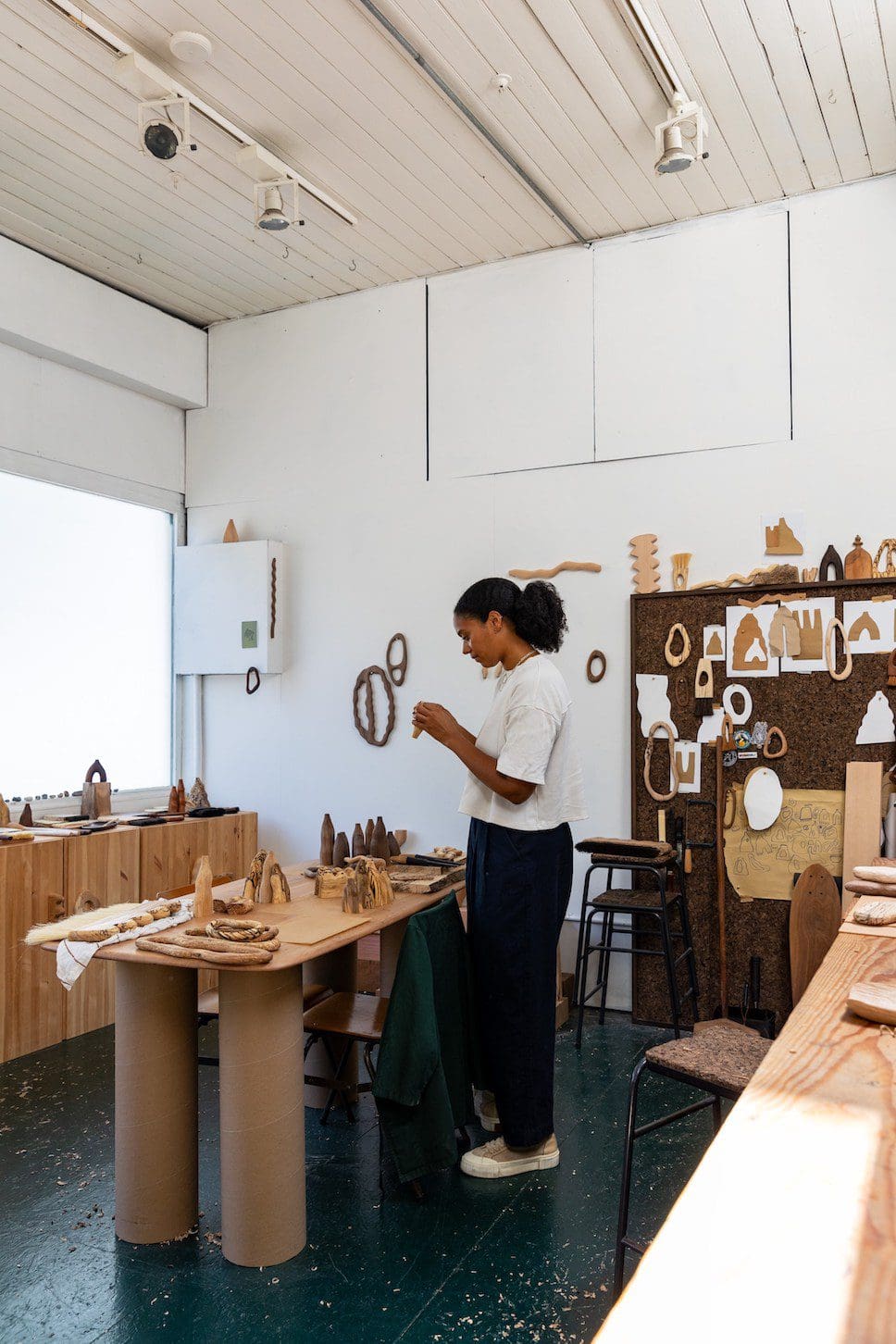
What place do you think traditional craft and techniques have in the future of product design with sustainability in mind?
There will always be a place for innovation and newness, but we will always be drawn to tradition and how things have been done for all the years before us. It’s great to see ways of working that will speed up the process, however sometimes the best ways are the ones that have been working for hundreds of years without changing.
Using traditional methods usually slows down the processes, which means the pieces are intentional, considered, and not overproduced.
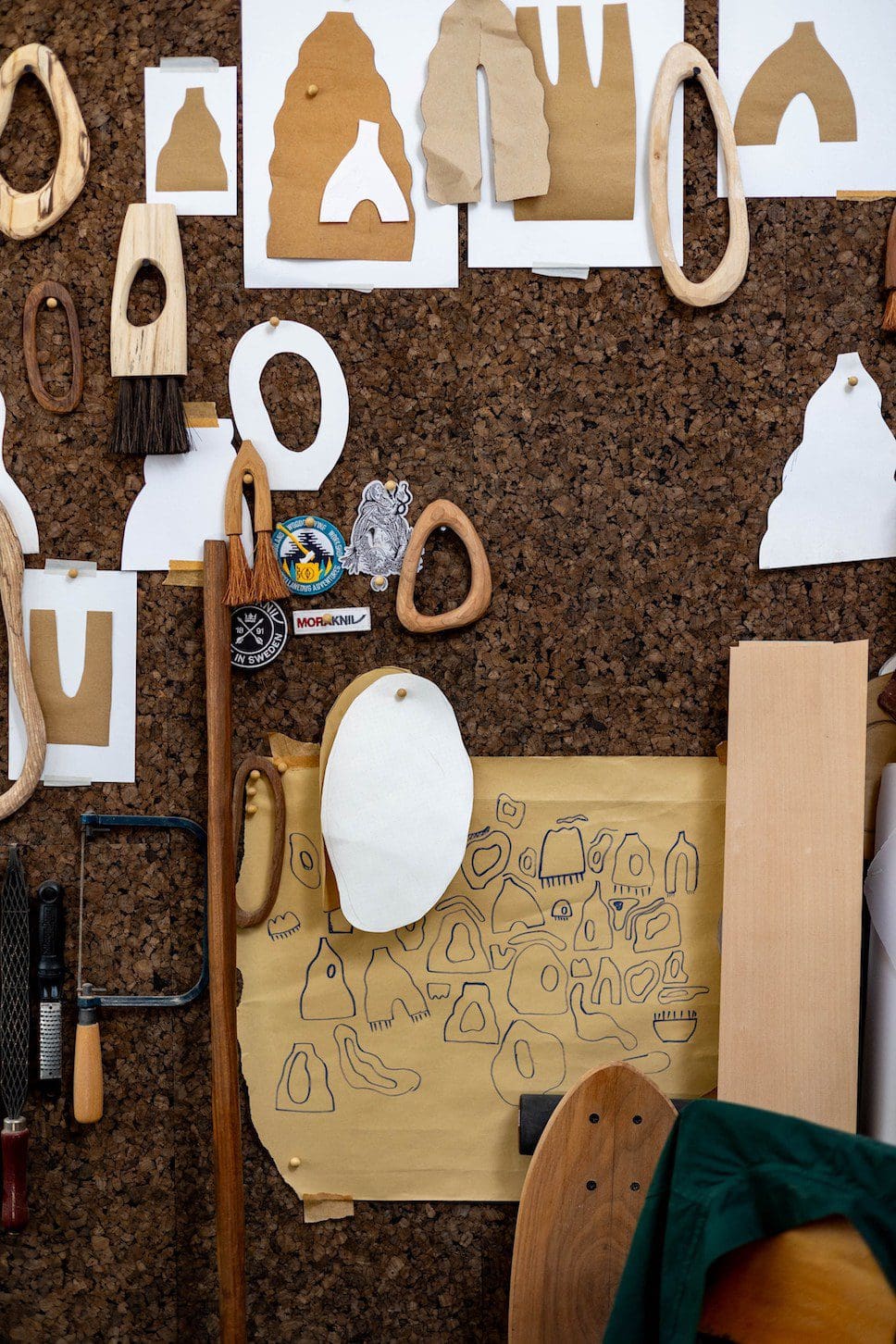
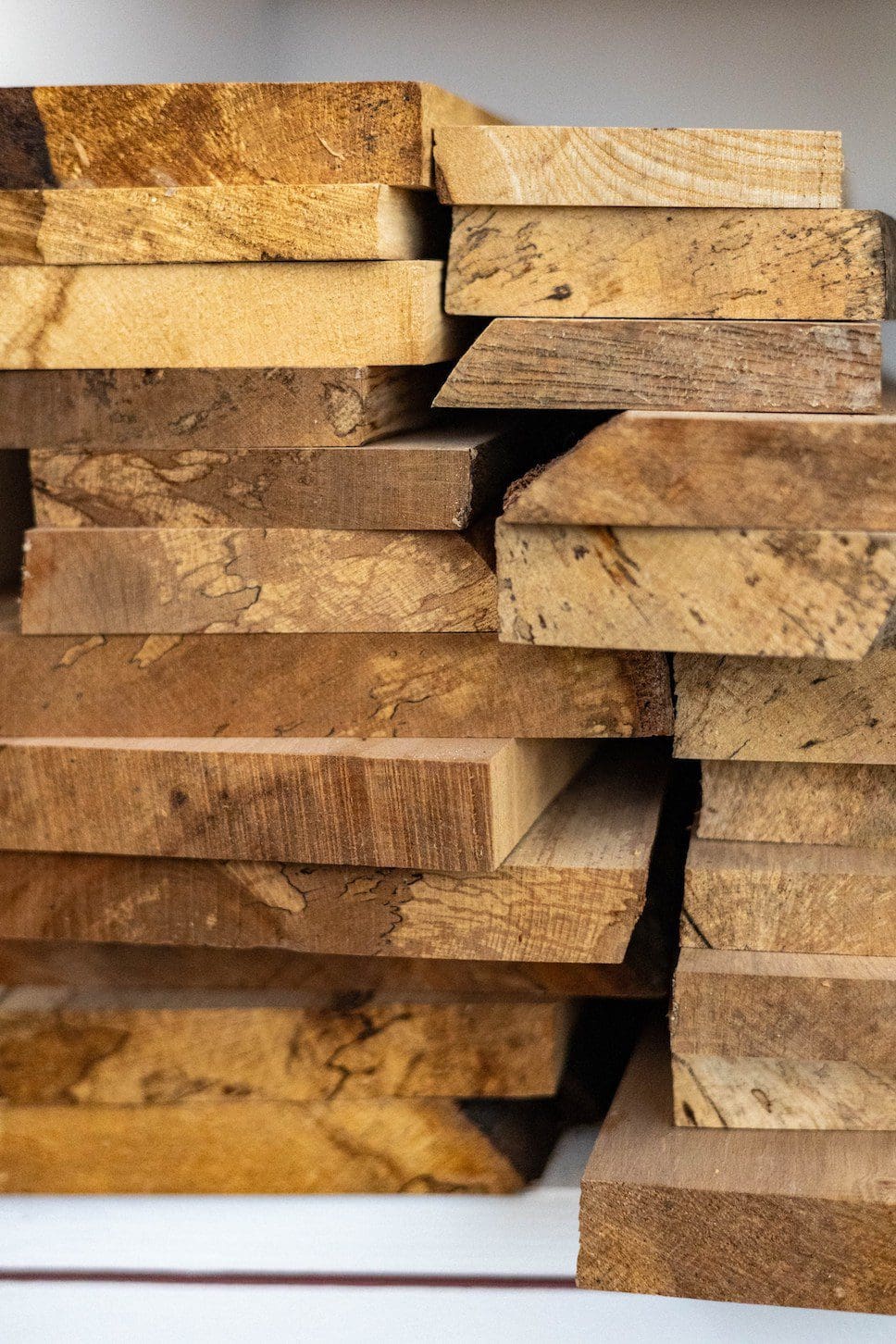
How do you aim to challenge or break boundaries in your discipline?
With my work I only ever make pieces that I would have in my home; I never make anything that you could find elsewhere. I have always wanted be playful in my approach and don’t like to take the work or pieces too seriously. I’ve turned down quite a few collaborations in the past as I didn’t want to make something specific, and it has been a huge learning curve to be able to say no to the jobs that wouldn’t complement my way of working.
I like to encourage anyone to start making and really enjoy the process – the mistakes are what make you better at your craft.
What does craftsmanship mean to you and how do you put attention to detail into your designs?
Craftsmanship to me is an accumulation of passion and trial and error. There is a strong element of attention to detail and traditional techniques, but also modern design sensibilities. Taking things slow and working out the best way to make something and being considerate to the process and materials used.
I spend a lot of time refining my pieces and often sit with them and re-work them before I add them to my collection.

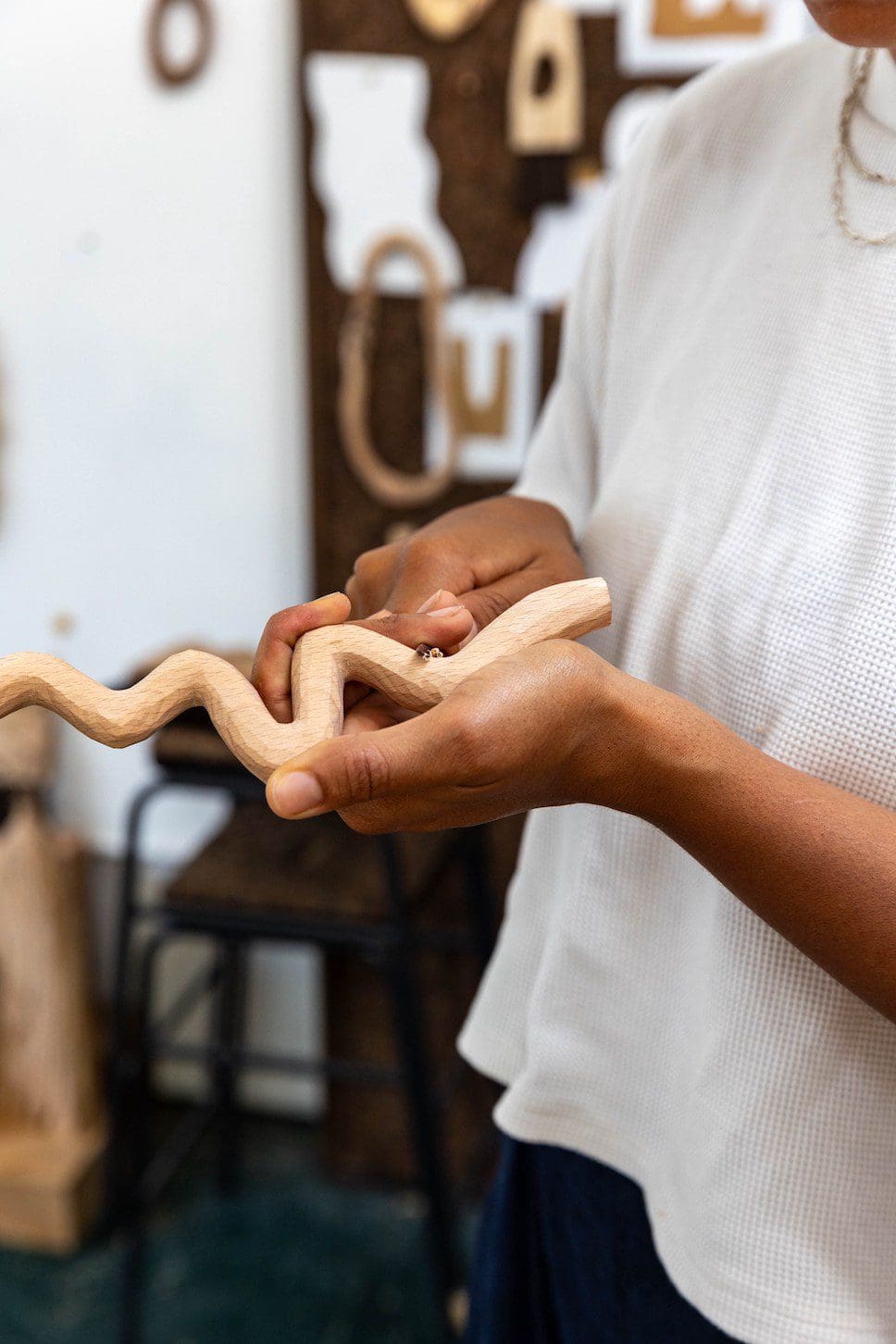
What are your hopes and plans for the rest of 2023 and beyond?
So many things! I would mainly just like to keep my head down working away in my wonderful little studio, releasing objects available in my seasonal collections.
I’m planning on doing lots of writing. This is a statement I have been saying for years, but I am coming closer to writing a book than ever and trying not to be too overwhelmed by the task.
One day, when I have a bigger studio I would love to make some really huge sculptures. At the moment I am more than happy just to take each day as it comes, as I am so thankful that this is my job.
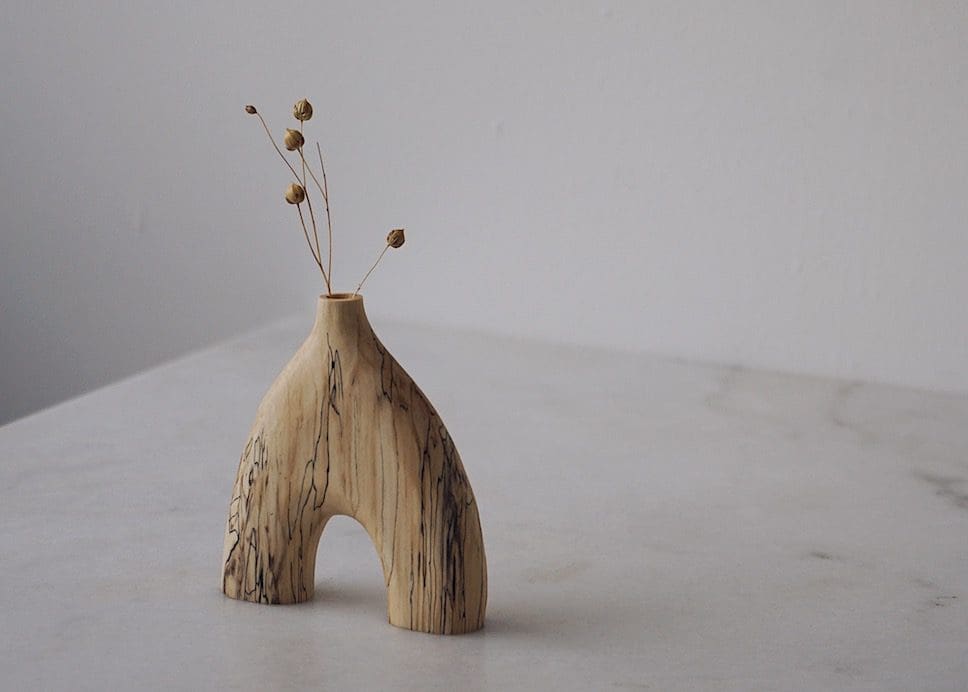
Photography by Sherion Mullings.
Discover the full collection of beautiful wooden objects by Sophie Sellu at online at Grain & Knot.
Read more Meet the Maker interviews here on enki, including our conversation with the founder of Londe Botanics, a brand known from making ethically sourced skincare and botanical oils.
